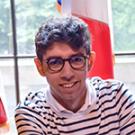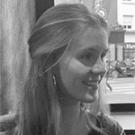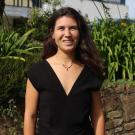

Le 14 juillet 2021, 67 élèves ingénieurs militaires (IETA), placés sous les ordres de l’ingénieur en chef de l’armement, Eric, ont défilé sous la forme d’un carré de 8 par 8 précédé par une garde au fanion de 3 élèves. Tous ont bénéficié d'un entraînement préalable de deux semaines.

67 IETA military engineering students will march in a phalanx formation eight ranks deep, preceded by a formation of three students bearing the pennant. All of them will receive two weeks’ training beforehand.
Ahead of the event, a new pennant has been designed and approved by the Historical Service of the French Army (SHD) for ENSTA Bretagne. Similarly, the IETA military engineering students’ uniform has been amended to include a ceremonial sword.
A number of students will participate in the public relations operation taking place at the Hôtel des Invalides after the parade, from 13.30 to 17.00. Why not have a look at the route they will be taking below!
Find out about the IETA military engineering program
This is the first time IETA military engineering students will be joining the Bastille Day military parade on July 14, to celebrate ENSTA Bretagne’s 50th anniversary and the 60th anniversary of the French Defense, Procurement and Technology Agency (DGA)
- In 2021, ENSTA Bretagne is celebrating 50 years since it was founded back in 1971.
- The school is built on a legacy of technical training programs within the armed forces dating back to 1819. The various institutions delivering those programs merged into a single school in 1971 – ENSIETA – which, at that time, almost exclusively trained IETA military engineers for the DGA.
- Over time, the number of civil engineering students – receiving training in the same specialist areas, for the hi-tech industries – has increased. For the past 25 years, civilian students have been in the majority and ENSTA Bretagne has achieved significant growth. It now boasts a world-class research center.
- Every year, more than 300 engineers, experts and doctors of engineering graduate from the school, nearly half of whom will go on to work in the defense sector, at the DGA or in hi-tech businesses that are shaping the defense industry. Most of these businesses have a twofold remit and conduct innovation programs for civilian and military applications alike.






Pauline
Pauline is currently finishing her 4th year of the IETA military engineering program, majoring in "Observation systems and artificial intelligence” and doing an end-of-study R&D internship in radar technologies for motor vehicles in the Brest region.
No one in my family worked in the Army, and yet I’ve always been interested in the forces, defense and the dedication this represents. Science and technology are also important subjects for me, so I decided to join the Armaments Studies and Technology engineering corps which perfectly combines both these vocations. The four-year program and the DGA provide a wide range of skills in highly advanced areas of innovation. I will immediately take advantage of what I have learned in the current programs, and will be able to continue upskilling for several more years yet so as to work in a variety of roles.

Marceau
For Marceau’s studies at ENSTA Bretagne, he has majored in Hydrography - Oceanography, a unique program in France. He is currently completing his end-of-study internship at one of the research laboratories at the French National Institute for Ocean Science (Ifremer), where he is developing an AI-driven data processing model for obtaining new digital sea condition forecasting tools. In September, he will be posted to the French Naval Hydrographic and Oceanographic Service (SHOM) and board the vessels of France’s oceanographic fleet as a hydrographic engineer.
The general engineering program taught at ENSTA Bretagne met all of my expectations, not only in technical and practical terms but also on a scientific level, particularly because I was able to take a double Master’s degree, to further hone my scientific knowledge in oceanography.
This three-year course has also been an opportunity for me to invest significantly on a personal level in the school’s association scene. For example, I was fortunate to be able to oversee organization of the Annual Gala, to be a musician there. This evening event brought 1,100 students, young graduates, staff members and guests together at Brest’s Les Ateliers des Capucins.

Raphaëlle
Raphaëlle chose the specialist field "Naval and Offshore Architecture" and the profile "advanced naval structures"
I decided to join the IETA military engineering corps as this route allowed me to combine naval architecture with the military aspect. Of all the ships out there, I have always been fascinated in frigates and submarines. The initial army training year (dubbed “Year 0”) was also a decisive factor in my choice as the idea of going out navigating for nearly a year and being out in the field, alongside the armed forces, was appealing. This experience proved to be extremely rewarding, on a human level of course, but also from a technical point of view. It provides clearer understanding of the forces’ requirements, which is the core focus of what we do at the DGA. During my training at ENSTA Bretagne, I learned about the DGA during my various internships and the diverse conferences at the school, and this confirmed my decision to become an IETA military engineer.

Baptiste
Baptiste is currently majoring in Naval and Offshore Architecture.
Being an Armaments Studies and Technology Engineer means being in the army and becoming an engineer to best equip the armed forces whilst keeping pace with the most recent technological innovations. I particularly appreciate the number and range of different majors on a single campus, thanks to which it is possible to gradually build up a very broad education in mechanical engineering, IT and hydrography. The first-year common core syllabus provides an insight into varied engineering fields which go far beyond merely our sector.

Émilie
Émilie chose to major in Observation and Artificial Intelligence Systems (SOIA). Currently at the end of her 2nd year, she is spending several months on international mobility in Belgium at the VUB AI lab, working on the theme of schizophrenia diagnosis support and detection through Machine Learning.
I chose to enroll in the IETA military engineering program as it imbues the engineering profession with a sense of purpose in my eyes. I feel like I am doing something worthwhile and working at the intersection of the armed forces and engineering, which helps to understand how they relate usefully to each other.
At the school I appreciate the opportunities to work on long-term projects. Through a conscientious attitude, research and the skillsets in the different subjects that all have to be harnessed together, we can become well trained and prepared for what will be asked of us. It also gives us an opportunity to nurture a team spirit, which is essential nowadays.

Grégoire
Grégoire is currently reaching the end of his studies at ENSTA Bretagne in the field of pyrotechnic systems. His training has included an exchange semester at Heriot Watt University in Edinburgh and a double Master’s degree completed in addition to his 3rd year at ENSTA Bretagne with ENSMA (National Engineering School for Aeronautical and Space Design).
At the moment he is working on his end-of-study project on the theme of missile motor sizing for a European manufacturer.
I found out about the IETA military engineering program while reading up about ENSTA Bretagne. The school’s pyrotechnics program had caught my eye, and the possibilities of working for the armed forces and of gaining an insight into how they work immediately appealed. This four-year course has confirmed my decision and I am proud to soon be able to put my skills and knowledge into practice for national benefit.

Quentin
After his first year of studies at ENSTA Bretagne, Quentin decided to enroll at ISAE Supaero on its "Automation and Neuro-AI" major in the "Signals and Systems" area of expertise."
I decided to come to ENSTA Bretagne to train as an Armaments Studies and Technology Engineer, because the training and career opportunities available through the French Defense, Procurement and Technology Agency (DGA) sounded immensely interesting. On the one hand, I was drawn by the expertise that is very much part of the various engineering positions at the DGA. This is the key mission that appealed to me at the DGA – between identifying the requirements of the forces and running design and delivery programs with manufacturers: working in contact with the forces and understanding their requirements to come up with solutions for addressing them. Another merit is that the military engineering profession offers up a lot of scope for mobility and progression.

































































































































